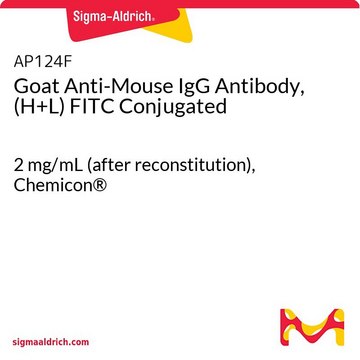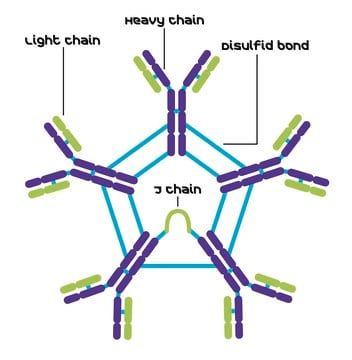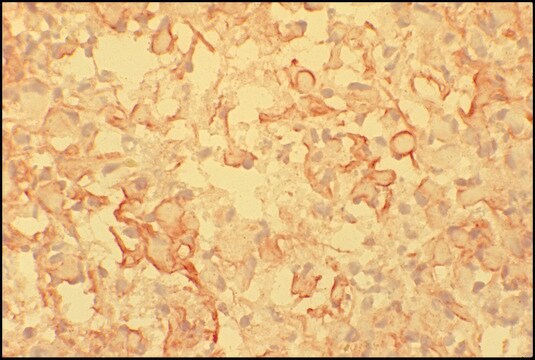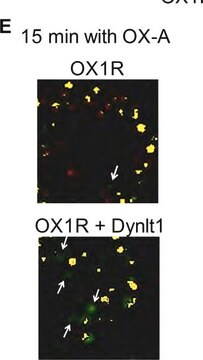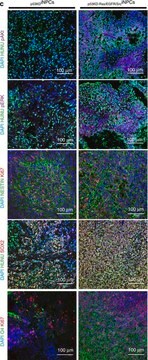F9259
Anti-Mouse IgM (μ-chain specific)–FITC antibody produced in goat
affinity isolated antibody, buffered aqueous solution
Sinónimos:
Mouse IgM antibody
About This Item
Productos recomendados
origen biológico
goat
conjugado
FITC conjugate
forma del anticuerpo
affinity isolated antibody
tipo de anticuerpo
secondary antibodies
clon
polyclonal
formulario
buffered aqueous solution
técnicas
direct immunofluorescence: 1:128
temp. de almacenamiento
2-8°C
modificación del objetivo postraduccional
unmodified
Descripción general
Anti-Mouse IgM (μ-chain specific)-FITC antibody is specific for mouse IgM with mu chain. The antibody preparation is specific for mouse IgM when tested against purified mouse IgA, IgG (all subclasses), and IgM. Goat anti-mouse IgM is then conjugated to Fluorescein Isothiocyanate (FITC), Isomer I.
Especificidad
Inmunógeno
Aplicación
Immunofluorescence (1 paper)
Forma física
Cláusula de descargo de responsabilidad
¿No encuentra el producto adecuado?
Pruebe nuestro Herramienta de selección de productos.
Código de clase de almacenamiento
10 - Combustible liquids
Clase de riesgo para el agua (WGK)
WGK 3
Punto de inflamabilidad (°F)
Not applicable
Punto de inflamabilidad (°C)
Not applicable
Certificados de análisis (COA)
Busque Certificados de análisis (COA) introduciendo el número de lote del producto. Los números de lote se encuentran en la etiqueta del producto después de las palabras «Lot» o «Batch»
¿Ya tiene este producto?
Encuentre la documentación para los productos que ha comprado recientemente en la Biblioteca de documentos.
Los clientes también vieron
Nuestro equipo de científicos tiene experiencia en todas las áreas de investigación: Ciencias de la vida, Ciencia de los materiales, Síntesis química, Cromatografía, Analítica y muchas otras.
Póngase en contacto con el Servicio técnico



